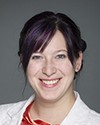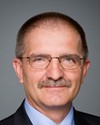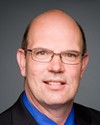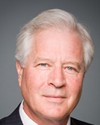Thanks.
I'm Robert Nuttall. I'm the assistant director of cancer control policy. I'll be doing the presentation, but my colleague, Rob Cunningham, a senior policy analyst with the society, will also be here for the question period.
Chair and committee members, I want to thank you for the opportunity to talk to you today about lung cancer. We're here on behalf of the Canadian Cancer Society, a national community-based organization of volunteers whose mission is to eradicate cancer and enhance the quality of life of people living with cancer.
As you've already heard, lung cancer is a significant contributor to the overall burden of cancer in Canada. It's a major concern for our organization. Lung cancer is the most common cancer diagnosed in Canada. It is expected that 26,600 new cases will be diagnosed this year. As well, as we've heard, the five-year relative survival rate for lung cancer is among the lowest of all cancers at 17%, whereas the overall survival rate for all cancers combined is 63%. This year, we expect 20,900 Canadians to die from lung cancer. As we've heard, that's more than the number who will die from breast, prostate, and colorectal cancers combined.
While these numbers are substantial, we have been seeing progress in the fight against this disease. Incidence rates for lung cancer among males have been declining since the 1980s, and the incidence rates for females have finally stopped increasing. This is a reflection of the past trends we have seen in tobacco use. However, even though smoking rates are dropping, 19% of Canadians continue to smoke.
Smoking is the leading cause of lung cancer. It's responsible for more than 85% of all cases, but a number of other factors also cause lung cancer, and these factors can also increase the risk of cancer in people who are smokers.
One of the most significant is radon. It's a colourless, odourless, radioactive gas found naturally in our environment. It's estimated that about 16% of lung cancer deaths in Canada are due to radon. That's more than 3,000 deaths a year. The health concerns from radon are primarily around radon in indoor spaces, where radon can accumulate to high levels. Health Canada has recommended an indoor radon limit of 200 becquerels per cubic metre, although it should be noted that there is no known safe level for radon.
Awareness of radon among Canadians is low. Last fall we did a survey of Canadians and found that only 32% of Canadians were somewhat or very familiar with radon. Sixteen per cent of Canadian had not even heard of it. Testing one's home is the only way to know if a home has high levels of radon. Our survey found that 96% of Canadians have not tested their homes. When asked why, the main reason, most said, was that they had never thought about it. This shows the importance of raising awareness about radon.
The society appreciates the work that Health Canada is doing to raise awareness through their support of the national “Take Action on Radon” campaign, but there are a number of additional initiatives that can take place at the federal level to minimize people's exposure to radon. These can include financial incentives, such as support to homeowners to lower radon through mechanisms such as tax credits; reviewing the radon guidelines set by Health Canada to consider whether 100 becquerels per cubic metre would be appropriate; reviewing national building codes to consider new measures for new home builds; and ensuring that public buildings get tested for radon and mitigation is undertaken when levels are above the Health Canada guideline.
Another major cause of lung cancer is asbestos. Although we no longer have operating asbestos mines in Canada, many workers continue to be exposed to asbestos currently used in products and buildings or through imported raw asbestos and asbestos-containing products. There's still more work that can be done to further reduce exposure to asbestos. This could include developing and maintaining registries related to asbestos, such as building registries that provide a public record of buildings that contain asbestos, and disease registries, so that we know how many Canadians are exposed to asbestos through their workplaces. As well, we'd like to see a phase-out of new asbestos products to ensure that for Canadians future exposures to asbestos do not occur.
In addition, there are a number of other workplace chemicals that cause lung cancer. The sectors that tend to be most affected by these chemicals include the construction and manufacturing industries. The strategies needed to protect workers will vary depending on the specific substance. However, we need workplace policies in place that strive to reduce exposures or that completely eliminate exposures whenever possible.
Another risk factor that we're paying attention to is air pollution. In 2013 the International Agency for Research on Cancer classified outdoor air pollution and particulate matter within air pollution as known carcinogens. Air pollution is a difficult term to define precisely, as it comprises many different components and a wealth of independent factors like weather fluctuations and nearby industries. There are several components within air pollution that are known to cause cancer, such as diesel engine exhaust, benzine, some volatile organic compounds, and other compounds
Protecting Canadians from air pollution can be done through initiatives that monitor releases, reduce emissions, and track diseases in affected communities.
Our organization is also a major organization in research funding. Last year we provided $5.1 million to fund a broad range of lung cancer and smoking-related projects across the country. Some highlights of what we're funding include research to identify genes that might make people more susceptible to lung cancer, particularly among non-smokers; a model that will provide new insights into how lung cancer starts; research on cancers due to working in the mining industry; and a new type of immunotherapy that can target a tumour's microenvironment.
There are two other projects I want to highlight. One project we're funding on occupational cancer in Canada will identify the number of cancer cases due to workplace exposures as well as the economic costs associated with these workplace exposures. The second is more of a population-based approach, looking at the number of cancers in Canada due to lifestyle and environmental factors. Both studies will give us a much better understanding of how many lung cancers in Canada can be prevented.
Your group is also interested in emerging best practices around screening and early detection. As you'll probably hear over the next couple of days, a pivotal study from the U.S. shows a 20% reduction in lung cancer mortality among people who are screened using a low-dose chest CT. The study involved more than 53,000 people between the ages of 55 and 74 who had a history of smoking. Lung cancer screening has the potential to reduce the number of cancer deaths in Canada. It also has the potential to have an impact on the costs associated with treating cancer. This will need to be weighed against the costs of implementing and running programs. Unlike other screening programs that target an entire population within a certain age range, lung cancer screening is most effective when done in a high-risk population. That will make recruitment and participation difficult.
Lastly, we know that smoking cessation is very effective at reducing lung cancer deaths. Lung cancer screening programs should aim to integrate with smoking cessation programs.
A number of initiatives are currently taking place across the country to help planners and decision-makers understand lung cancer screening. The Canadian task force on preventive health care is currently developing recommendations for lung cancer screening. A pilot study on lung cancer screening is currently under way in Alberta. A network convened by the Canadian Partnership Against Cancer brings together experts, including representatives from the society, to share information on the issue. This group was involved in developing a lung cancer screening framework for Canada, which is a tool used to support jurisdictions in their deliberations and/or planning for lung cancer screening. We want screening programs to exercise due diligence in assessing the impact of lung cancer screening to ensure that programs are developed in a responsible and evidence-based way.
Finally, as we've already heard, there is the stigma of lung cancer. The prevailing stigma is that lung cancer is a self-inflicted disease caused by smoking. This stigma is a common experience with lung cancer, and can result in psychological distress and lower quality of life for patients. A study of health care professionals, administrators, and not-for-profit organizations that was done in Ontario just last year found that lung cancer patients feel guilt and shame due to the stigma associated with their disease. Some participants reported that they felt lung cancer stigma resulted in reduced patient care and reduced funding for lung cancer compared with other cancers.
I want to end on something that somebody posted on our website. We have a website called CancerConnection.ca, an online peer support community for people with cancer. One woman wrote the following:
I am a 58 year old woman who started smoking at 13 when everybody smoked and was only finally able to quit just before the lung biopsy that confirmed I had lung cancer in January 2014....I told only essential people at work because I was embarrassed and I am still grateful that I have not had to go back yet...to face the questions. In a relatively small company of less than 200 employees, in a 5-6 year period I had 5 former co-workers, all women, die from lung cancer—smokers, non-smokers, former smokers. It doesn't matter. Lung cancer is a very deadly disease....The stigma is HUGE! No one deserves cancer.
In conclusion, lung cancer is the leading cause of cancer in Canada, responsible for more deaths than breast, prostate, and colorectal cancers combined. Smoking is the greatest risk factor for cancer, but other risk factors that have a significant impact include radon, asbestos, air pollution, and a number of occupational carcinogens. Awareness of radon is low, with only 30% of Canadians somewhat or very familiar with it.
People facing lung cancer often face serious stigma. Regardless of what caused someone's lung cancer, Canadians and their families facing this horrific disease should receive as much support as possible.
Thank you very much.








